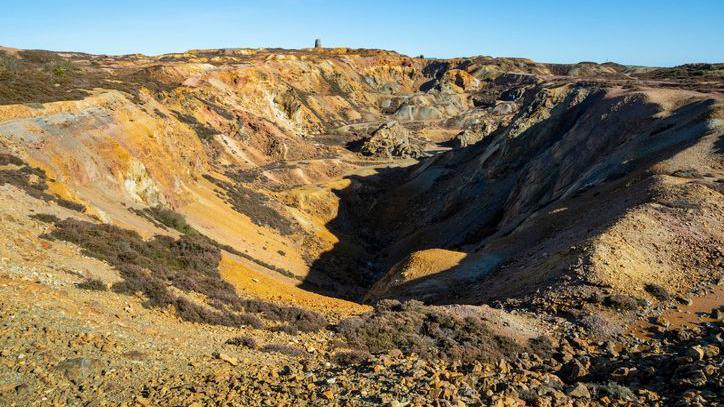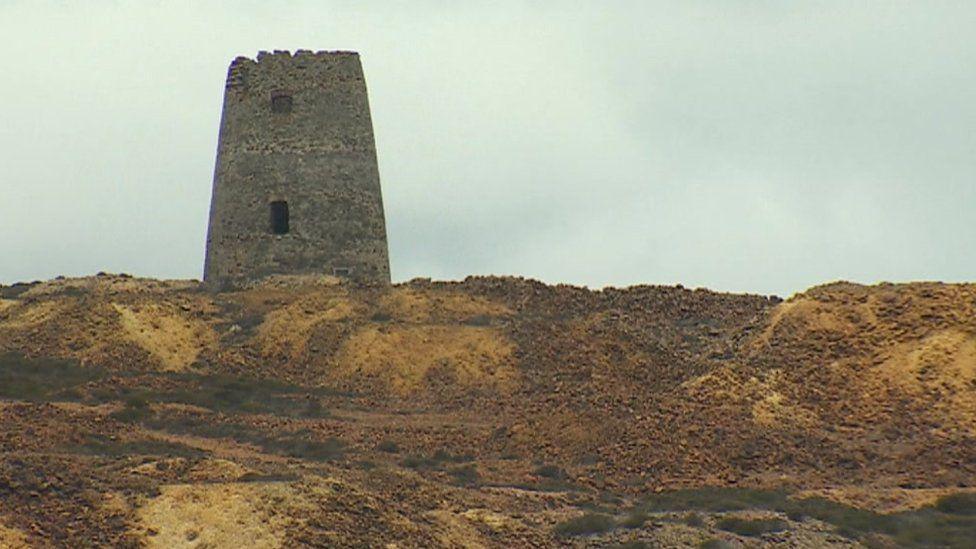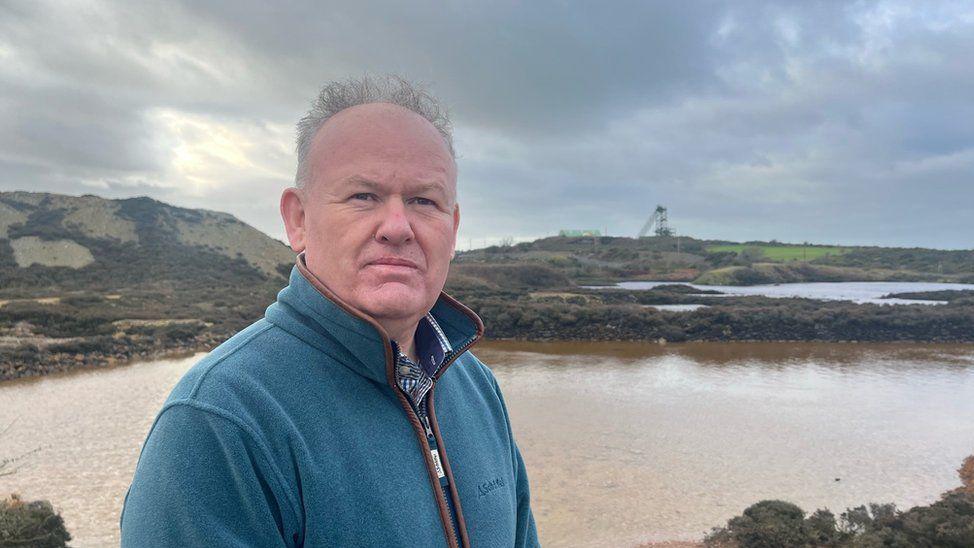Copper works reopening hits 'significant milestone'

By the 1780s Parys Mountain was the largest mine in Europe
- Published
Developers hoping to restart mining an Anglesey copper works say they’ve reached a "significant milestone" after submitting the first necessary steps for plans that could create 120 jobs.
Tests show the area around Parys Mountain to contain deposits rich in copper, zinc, lead, silver and gold "worth around $1bn [£755m]", according to Anglesey Mining PLC.
The company has now prepared the first phase of an environmental impact assessment with the ambition of new underground works at the site.
Anglesey councillor Aled Morris Jones said he welcomed "the potential to create jobs but while adhering to concrete guidelines to protect the environment".
Gold and copper could be mined on island
- Published5 January 2023
'Welsh copper traded widely during Bronze Age'
- Published29 October 2019
Young leave as hopes hinge on power plant boost
- Published23 July 2024
With evidence of copper mining there dating back to the Bronze and Roman ages, by the 1780’s Mynydd Parys was the world’s biggest copper mine and led to an economic and population boom in nearby Amlwch.
But despite opening up significant underground workings at about 1810, by the turn of the 20th Century all significant mining activity had come to an end.
For decades the site has been a tourist attraction, with the lunar-like landscape being used in a number of films and television shows including Mortal Kombat II.
Hopes of further work at the site have resurfaced several times over recent years, but owners Anglesey Mining have now submitted a 220-page Environmental Impact Assessment Scoping Report which forms part of the necessary planning process.
The company says that any future mining at Parys would be carried out underground, potentially using an existing shaft built in the 1990’s, but could create around 120 direct jobs in an area recently described by Anglesey council as of economic concern.

Parys Mountain Windmill, a Grade II listed building located at the the hill's highest point, would not be affected by the proposals according to Anglesey Mining PLC
Rob Marsden, the CEO of Anglesey Mining, described the move as "a very significant milestone for Anglesey" but that re-starting mining at the site would require a capital investment of "around $100m" (£75m).
This would include construction of an on-site processing plant.
"We’re very aware of its heritage with the great open pit, pearl engine house and windmill up on the mountain - those areas won’t be affected at all," Mr Marsden told the BBC.
"We’ll be at around 400 metres underground, whereas the deepest 18th Century mining was at about 100 metres below surface.
"The idea would be to process into a concentrate, containing about 30% copper, and truck that to the Port of Holyhead for export.”
He said he expects that "around 40%" of revenues would be generated from the copper and 33% from zinc.
The 220-page scoping report has now been submitted to the North Wales Minerals and Waste Planning Service, which will have the final say, although further planning permission will be required before any work can take place.
"The mine life at the moment is 12-15 years, we’re hopeful it will be longer and we discover more deposit there," Mr Marsden added.
He said Mynydd Parys was "demonstrably the largest and most advanced project of its kind in the UK" and was "favourably located on a previously permitted, development site with significant existing infrastructure already in place".

Aled Morris Jones says he welcomes the work but wants it to adhere to guidelines which protect the environment
While the local community will have their say as part of the planning process, the councillor for the Twrcelyn ward, Aled Morris Jones, said the development is to be welcomed.
“They have spent £300,000 on producing the application, as far as I understand, which goes to show there is a commitment there,” he said.
"I also welcome the news that there is no opencast mining to take place, and any work will be underground.
"There is also a commitment to work with the communities around the mountain and those historical interests, including the industrial history of the area and the unique geological landscape of Ynys Môn."